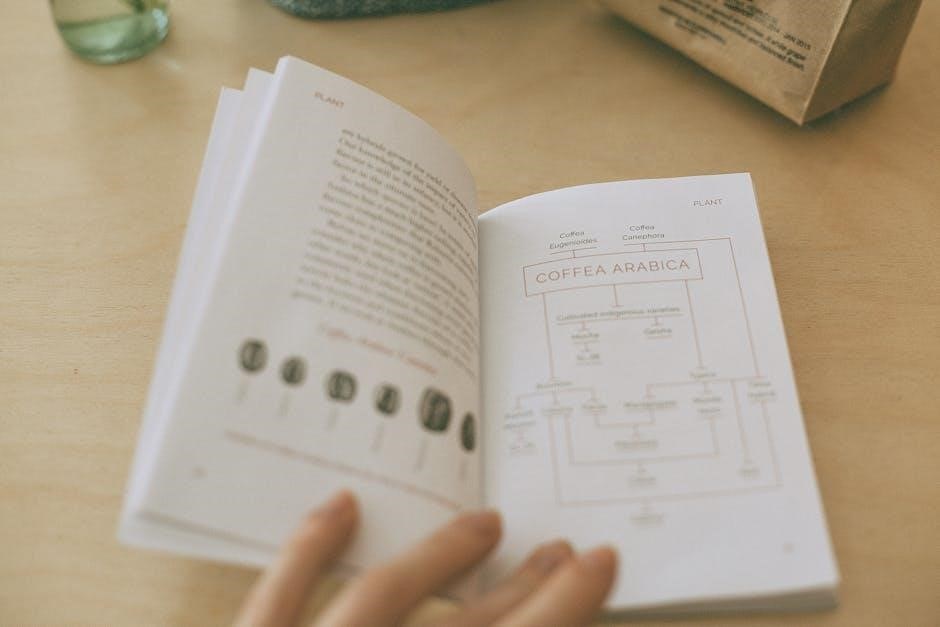Welcome to the LowA Boot Size Guide, your essential resource for finding the perfect fit. This guide helps you determine your ideal boot size accurately, ensuring comfort and optimal performance for every adventure.
Overview of LowA Boots and Their Popularity
LowA boots have gained widespread popularity among outdoor enthusiasts due to their exceptional durability, comfort, and precise sizing. Known for their high-quality craftsmanship, LowA offers a wide range of styles suitable for hiking, trekking, and everyday wear. Their boots are particularly favored for their anatomical fit and robust construction, making them ideal for challenging terrains. The brand caters to diverse foot shapes and sizes, including larger men’s sizes, which sets them apart from competitors. With a focus on innovation and comfort, LowA boots are a top choice for those seeking reliable footwear for active lifestyles. Their popularity continues to grow globally.
Why Accurate Sizing is Important for Comfort and Performance
Accurate sizing is crucial for both comfort and performance in LowA boots. Proper fit ensures optimal support and reduces the risk of discomfort, blisters, and fatigue during activities. Ill-fitting boots can lead to poor posture, decreased mobility, and even long-term foot issues. LowA’s precise sizing system, including half sizes, helps users achieve a snug yet comfortable fit. Correct sizing also enhances the boot’s performance, allowing better control and stability on various terrains. By ensuring a accurate fit, wearers can fully utilize the boot’s features, making every adventure more enjoyable and efficient. Thus, precise sizing is essential for maximizing both comfort and functionality.

Understanding Foot Measurement
Understanding foot measurement is key to selecting the right LowA boot size; Measure foot length from heel to big toe tip using LowA’s guide. Ensure accurate fit by measuring both feet, as sizes may differ; This step ensures comfort and optimal performance in your boots.
How to Measure Your Foot Length Accurately
To measure your foot length accurately, download and print LowA’s Foot Measurement Guide. Place the guide on a flat surface and position your foot on it, ensuring your heel aligns with the guide’s heel mark. Use a ruler to measure from the heel to the tip of your longest toe. For precision, stand upright and distribute your weight evenly on both feet. Measure both feet, as they may differ in size. Repeat the process to ensure consistency. Accurate measurement ensures the best fit for your LowA boots, especially when selecting between sizes or considering half sizes.
Using the LowA Foot Measurement Guide
Using the LowA Foot Measurement Guide ensures precise sizing for optimal comfort. Print the guide on standard paper and place it on a flat surface. Align your heel with the marked heel point, ensuring your foot is relaxed. Measure from the heel to the tip of your longest toe. For accuracy, perform this measurement twice and take the average. If your measurement falls between sizes, consider rounding up. This method helps determine your size accurately, reducing the need for adjustments later. By following these steps, you can confidently select the right LowA boot size for a perfect fit every time.
Why Measuring Both Feet is Essential
Measuring both feet is crucial for achieving the best fit, as foot lengths often differ slightly. Many people have one foot longer than the other, and using the larger measurement ensures a comfortable fit. Ignoring this can lead to tightness or discomfort. By measuring both feet, you can determine the most accurate size for your boots. This step is especially important for ensuring proper toe room and heel fit. Using the LowA Foot Measurement Guide, you can easily compare both feet and select the appropriate size. This simple practice helps prevent sizing errors and ensures your boots feel great during extended wear.
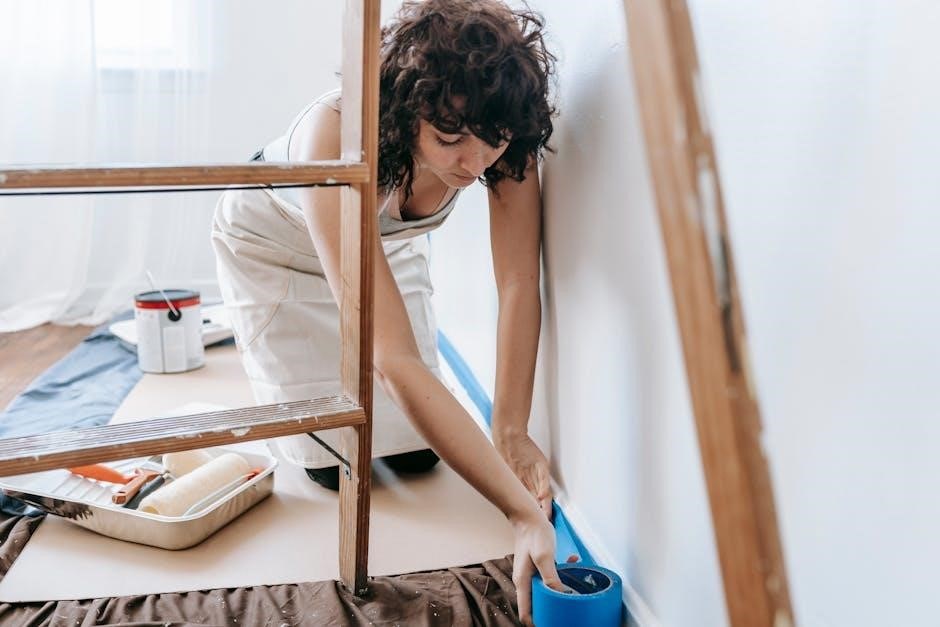
LowA Boot Size Chart
The LowA Boot Size Chart provides a detailed guide for men, women, and kids, helping you determine the correct size for optimal comfort and fit.
Men’s Boot Size Chart
LowA offers a comprehensive size chart for men, ensuring a precise fit. The chart includes UK sizes, with measurements from 311 to 324, corresponding to foot lengths in centimeters. Each size reflects a 8.46mm difference between full sizes. Men’s styles are available in various widths, including wide (E/EE) and medium (D). For the best fit, measure your foot length from heel to big toe. If your measurement falls between sizes, opt for the larger size. LowA’s men’s boots are true to UK sizing, and they offer free returns for added convenience. Trying them on with appropriate socks is recommended for ultimate comfort.
Women’s Boot Size Chart
LowA’s women’s boot size chart provides a detailed guide to ensure the perfect fit. The chart includes UK sizes, with corresponding foot lengths in centimeters. Women’s styles are available in medium (D) and wide (C) widths. When measuring, place your foot flat and measure from the heel to the big toe. If your measurement falls between sizes, consider sizing up by half a size for comfort; LowA recommends trying boots with appropriate socks, as this affects fit. The women’s size chart is designed to align with standard UK sizing, offering a range of options to accommodate different foot shapes and preferences. Proper fit ensures optimal comfort and performance.
Kids’ Boot Size Chart
LowA’s kids’ boot size chart offers a comprehensive guide tailored for children’s footwear. The chart includes UK sizes, corresponding foot lengths in centimeters, and Mondopoint measurements. To ensure accuracy, measure your child’s foot from the heel to the big toe while standing. Kids’ feet grow rapidly, so regular checks are essential. The chart provides clear conversions to help determine the ideal size, ensuring proper fit and comfort. LowA recommends sizing up if measurements fall between sizes, as this allows room for growth. The chart is designed to cater to varying foot shapes and sizes, ensuring your child’s boots are both comfortable and supportive during outdoor activities.
How to Read the Size Chart
Reading the LowA size chart is straightforward once you understand the key elements. The chart lists shoe sizes in UK, EU, and US formats, along with corresponding foot length measurements in centimeters and Mondopoint sizes. Start by identifying your foot length, measured from the heel to the big toe. Match this measurement to the chart to find your size. Note that sizes may vary slightly between styles, so refer to the specific chart for your chosen boot model. If your measurement falls between sizes, consider rounding up for comfort. The chart also includes width options, ensuring a personalized fit. Always double-check the chart for accuracy to avoid sizing errors.
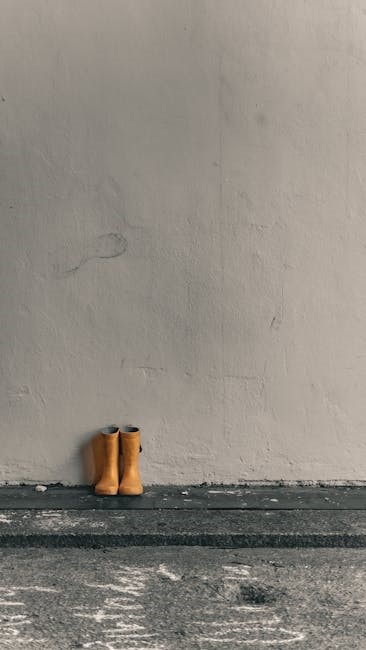
Size Conversion Guide
This section provides detailed conversions for EU, UK, and US sizes, as well as Mondopoint measurements. Use the charts to find your ideal size across different systems easily.
EU to UK Size Conversion
Converting EU to UK sizes is crucial for ensuring the right fit. LowA boots are available in UK sizes, which differ slightly from EU sizing. To convert, subtract 1-2 sizes from your EU size to get the UK equivalent. For example, an EU 42 is roughly a UK 8.5. Use the LowA size chart for precise conversion, as their sizing may vary slightly from standard EU measurements. Always measure your foot length and refer to the chart to avoid errors. If between sizes, consider ordering a half size up for comfort. Trying boots with socks is also recommended for the best fit.
- Measure foot length accurately using the LowA guide.
- Check the conversion table for exact UK sizing.
- Remember, LowA boots are made in UK sizes, not EU.
EU to US Size Conversion
Converting EU to US sizes is essential for ensuring the correct fit in LowA boots. EU sizes are typically 1-2 sizes larger than US sizes. For example, an EU 42 corresponds to a US 8.5. To convert accurately, subtract 1-2 sizes from your EU size. Use the LowA size chart for precise conversion, as their sizing may differ slightly from standard measurements. Measure your foot length and refer to the chart to avoid errors. If between sizes, consider ordering a half size up for comfort. Trying boots with socks is also recommended for the best fit.
- Measure foot length using the LowA guide.
- Refer to the conversion chart for exact US sizing.
- LowA offers half sizes for a more precise fit.
Mondo Point Size Conversion
Mondo Point sizing is based on the actual length of the foot in millimeters, offering a precise measurement system. To convert Mondo Point sizes to LowA boot sizes, measure the foot from the heel to the tip of the big toe. For example, a 280mm foot length corresponds to a Mondo Point size of 28.5. LowA boots are designed to accommodate this measurement system, ensuring a comfortable and accurate fit. If your foot length falls between two sizes, consider rounding up for the best fit. Always refer to the LowA size chart for exact conversions, as variations may occur between styles.
- Measure foot length in millimeters for Mondo Point sizing.
- Use the LowA size chart for precise conversions.
- Round up if between sizes for optimal comfort.
Common Mistakes in Size Conversion
When converting sizes for LowA boots, common mistakes include ignoring the difference between EU and UK sizing systems, not measuring both feet accurately, and assuming all styles fit the same. Many users overlook the importance of trying boots with socks, leading to poor fit. Additionally, not accounting for foot width and relying solely on length can result in discomfort. Errors in Mondo Point conversions often stem from incorrect foot measurements or misaligning millimeter lengths with size charts. To avoid these issues, always use LowA’s official size chart, measure both feet, and consider width options. Proper sizing ensures optimal comfort and performance for any activity.
- Ignore differences between EU and UK sizing systems.
- Fail to measure both feet for accurate sizing.
- Overlook the importance of foot width and sock thickness.
- Misalign Mondo Point measurements with size charts.

Tips for Choosing the Right Boot Size
Measure your foot length accurately, consider sock thickness, and check boot width options. Try boots on with appropriate socks and opt for a slightly larger size if unsure.
- Measure foot length precisely using LowA’s guide.
- Account for sock thickness when selecting size.
- Ensure proper toe room and heel fit.
How to Determine Your Ideal Boot Size
To determine your ideal boot size, start by measuring your foot length accurately using LowA’s foot measurement guide. Print and follow the instructions carefully to ensure precision. Once measured, refer to the LowA size chart to find the corresponding UK size. Consider the thickness of socks you plan to wear, as this can affect fit. Try boots on in the afternoon, as feet tend to swell slightly during the day. Ensure there is adequate toe room and a snug heel fit. If you’re between sizes, opt for the larger size to accommodate comfort and movement. Proper fit ensures optimal comfort and performance for any activity.
- Measure foot length accurately using LowA’s guide.
- Refer to the LowA size chart for size conversion.
- Consider sock thickness for the best fit.
- Try boots on in the afternoon for accuracy.
- Opt for a larger size if between sizes.
When to Order a Half Size
Ordering a half size is beneficial when your foot measurement falls between two full sizes or if you need additional space for comfort. LowA offers half sizes to cater to precise fit needs, ensuring your boots are neither too tight nor too loose. If you typically experience discomfort in standard sizes or prefer a roomier fit, especially with thicker socks, consider a half size up. This is particularly useful for activities requiring extra toe room or for those with foot shapes that don’t conform to standard sizing. A half size can make a significant difference in comfort during extended wear, enhancing overall performance and satisfaction.
- Choose a half size if between two full sizes.
- Opt for a half size when extra space is needed.
- Consider a half size for comfort with thicker socks.
- Half sizes enhance fit for unique foot shapes.
How Boot Width Affects Sizing
Boot width plays a crucial role in ensuring a comfortable and proper fit. LowA boots are available in various widths, including narrow, medium, and wide options, to accommodate different foot shapes. A boot that is too narrow can cause discomfort and restrict movement, while one that is too wide may lead to blisters or lack of support. The right width ensures proper support and prevents common issues like pressure points or excessive slipping. When trying on boots, consider the width in relation to your foot’s natural shape. This attention to detail guarantees a more personalized fit, enhancing both comfort and performance during wear.
- Choose a width that matches your foot shape.
- Avoid boots that are too tight or too loose.
- Proper width prevents discomfort and blisters.
- Width options ensure a personalized fit.
Why You Should Try Boots with Socks
Trying boots with socks is essential for achieving the best fit. Socks add thickness, affecting how the boot feels and performs. LowA recommends wearing the same type of socks you plan to use with the boots during try-ons. This ensures proper comfort and prevents issues like tightness or excessive room. Seasonal variations in sock thickness can impact fit, so consider this when choosing your size. For example, thicker winter socks may require a slightly larger size, while thinner socks might call for your usual size. Testing with socks guarantees a more accurate fit, ensuring optimal comfort and performance for your adventures.
- Use the same socks you plan to wear with the boots.
- Sock thickness affects fit and comfort.
- Adjust sizing based on seasonal sock preferences.
- Proper fit ensures better performance and comfort.

Men’s Boot Sizing Tips
LowA boots offer a range of sizes and widths for men, ensuring a comfortable fit. Understanding boot width options and adjusting for toe room can enhance comfort and performance.
- Choose from wide or standard widths for optimal fit.
- Ensure adequate toe room for comfort during movement.
- Men’s boots may require a different size due to foot shape and boot design;
Understanding Men’s Boot Width Options
LowA offers men’s boots in various widths, including standard (D), narrow (C), and wide (E/EE). Each width provides a different fit to accommodate foot shapes and preferences. To determine your ideal width, measure your foot’s ball and ensure the boot allows comfortable movement. A proper fit should not feel too tight or loose. For wider feet, opt for E/EE widths, while narrower feet may prefer C. Boot width also affects toe room and heel fit, so consider your activity level and the thickness of socks. Proper width ensures all-day comfort and prevents blisters. Always consult the size chart and try boots on if possible for the best fit.
How to Adjust for Toe Room
Ensuring adequate toe room is crucial for comfort and performance in LowA boots. Proper toe room allows your toes to wiggle freely without pressure. Measure your foot length from heel to big toe, then refer to the LowA size chart for guidance. If your foot length falls between sizes, consider ordering the larger size. Additionally, wearing appropriate socks can affect toe room, so try boots with the same thickness of socks you plan to use. LowA boots are designed with a roomy toe box, but personal fit preferences may vary. Adjustments might be necessary for optimal comfort during activities like hiking or long walks.
Why Men’s Boots May Require a Different Size
Men’s boots may require a different size due to variations in foot shape, width, and personal comfort preferences. LowA boots are designed with a roomy toe box, but some men may need a larger size for thicker socks or insoles. Additionally, foot length and width can vary, and LowA offers options like narrow, medium, and wide fits to accommodate different foot shapes. Men who engage in activities like hiking may prefer a slightly larger size for extra comfort. It’s important to measure both feet and consider activity-specific needs when selecting a size. LowA’s sizing guide can help ensure the best fit for men’s boots.

Women’s Boot Sizing Tips
Women’s boots may require sizing adjustments for comfort and fit. Heel fit is crucial, and some women may need to size up by half a size. Ensure proper fit by trying boots with appropriate socks and considering foot length and width for optimal comfort.
Adjusting for Heel Fit in Women’s Boots
Ensuring a proper heel fit is crucial for comfort and performance in women’s boots. A snug heel prevents slippage during movement, while excessive tightness can cause discomfort. When trying on boots, wear the same type of socks you plan to use. If the heel feels too loose, consider a smaller size or adding insoles for a better fit. Conversely, if the heel is too tight, a half-size increase may be necessary. Pay attention to the boot’s lacing system, as it can help secure the heel. Proper heel fit ensures stability and reduces the risk of blisters during extended wear. Always prioritize comfort and support when adjusting for heel fit.
Why Women May Need to Size Up
Women may need to size up in LowA boots to ensure proper fit and comfort. This is often due to foot length or personal comfort preferences. If your foot measures between sizes, ordering a half size up is recommended for adequate toe room. Additionally, women’s feet may naturally require more space in certain boot styles, especially for longer hikes or adventures. LowA suggests women order a half size up for optimal comfort. This adjustment ensures the boot fits securely without feeling too tight, particularly when wearing thicker socks. Proper sizing is crucial for performance and comfort, so consider this guidance when selecting your LowA boots.
How to Ensure Proper Ankle Fit
Proper ankle fit is crucial for both comfort and performance in LowA boots. To ensure a secure yet comfortable fit, try boots on in the afternoon, as feet tend to swell throughout the day. Wear the same type of socks you plan to use with the boots, as this affects fit. For women, it’s important to ensure the ankle collar isn’t too tight or too loose, as this can lead to discomfort or poor support. If the boot feels too restrictive or slides excessively, consider adjusting the lacing or trying a different size. Proper ankle fit ensures stability and prevents blisters or discomfort during extended wear.
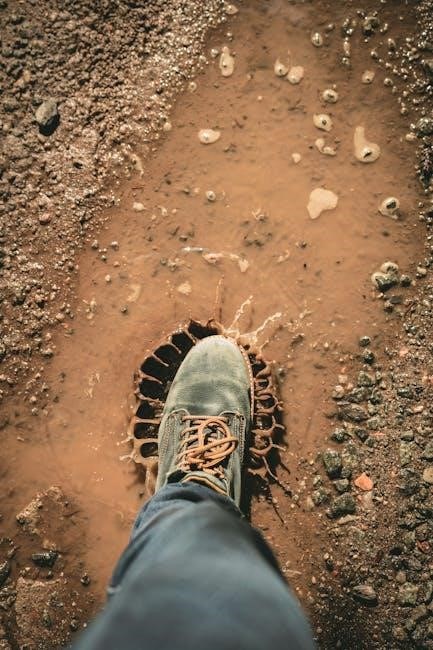
Kids’ Boot Sizing Tips
Measure kids’ feet regularly, as growth can be rapid. Consider boot width for comfort and support. LowA offers various sizes, ensuring proper fit and flexibility for growing feet.
How to Measure Kids’ Feet Accurately
Measuring kids’ feet accurately is crucial for the right boot fit. Use a ruler or LowA’s foot measurement guide to determine length from heel to big toe tip. Ensure the child stands straight, distributing weight evenly. Print the guide, place the foot on it, and mark the longest toe. Compare with the chart to find the corresponding size. Remember, kids’ feet grow quickly, so regular measurements are essential. Always measure both feet, as they may differ slightly. This ensures comfort and proper support, especially during outdoor activities. LowA offers sizes to accommodate growing feet, providing a comfortable fit every time.
Why Kids’ Boot Sizes Differ from Adults
Kids’ boot sizes differ from adults due to rapid foot growth and unique proportions. Children’s feet are narrower and shorter, requiring specialized sizing. LowA offers specific kids’ sizes to ensure proper fit and comfort. Unlike adults, kids’ feet grow quickly, making regular measurements essential. Boot styles for children are designed with growth in mind, providing extra room for toes. LowA’s size chart for kids includes smaller increments to accommodate these changes. Accurate measurements are crucial to avoid tight fits, ensuring comfort during outdoor activities. LowA’s sizing guide helps parents choose the right size, promoting healthy foot development and optimal performance.
How to Choose the Right Width for Kids
Choosing the right boot width for kids is crucial for comfort and proper fit. LowA offers various widths, including narrow, medium, and wide options, to accommodate different foot shapes. Measure both feet accurately using the LowA Foot Measurement Guide to determine the ideal width. Ensure the boots allow for natural toe movement without feeling too tight or loose. Consider the type of activity and the thickness of socks, as this may affect fit. For growing feet, a slightly roomier width can be beneficial. Always refer to the LowA size chart for guidance, ensuring the best fit for your child’s comfort and performance.

Additional Considerations
Boot style, insoles, and seasonal socks significantly impact fit. Ensure proper alignment with your foot shape and activity needs for optimal comfort and performance in LowA boots.
How Boot Style Affects Fit
Boot style significantly influences fit, as different designs cater to specific needs. Hiking boots may offer stiffer soles for support, while casual boots provide a more relaxed fit. Understanding your boot’s intended use and features, such as ankle height or waterproofing, ensures proper sizing. For example, a snug fit is crucial for high-intensity activities, while a slightly roomier fit might be better for everyday wear. Always consider the boot’s purpose and your activity level when selecting a size. Trying boots on with appropriate socks, especially thicker ones for hiking, ensures an accurate fit and optimal comfort.
The Role of Insoles in Boot Sizing
Insoles play a crucial role in achieving the perfect boot fit. They provide additional support, cushioning, and stability, which can enhance comfort during extended wear. When selecting boots, consider whether you plan to use custom insoles, as this may affect the overall fit. Lowa boots are designed to accommodate standard insoles, but thicker or specialized ones may require adjusting the boot size. Ensure your insoles fit comfortably inside the boot without causing tightness or restricting movement. Proper alignment and spacing are essential for optimal performance and comfort, especially during hiking or high-impact activities. Always test boots with your intended insoles for the best results.
Why Seasonal Socks Matter for Fit
Seasonal socks significantly impact boot fit and comfort. Thicker winter socks can add up to a half size in volume, while lightweight summer socks provide minimal bulk. When trying on boots, wear socks similar to those you’ll use seasonally to ensure an accurate fit. Lowa boots are designed to accommodate varying sock thicknesses, but improper sock choice can lead to tightness or excessive room. For optimal comfort, adjust your sock selection based on the season and activity. This ensures your boots remain comfortable and supportive, regardless of the weather or terrain, enhancing your overall experience and performance.
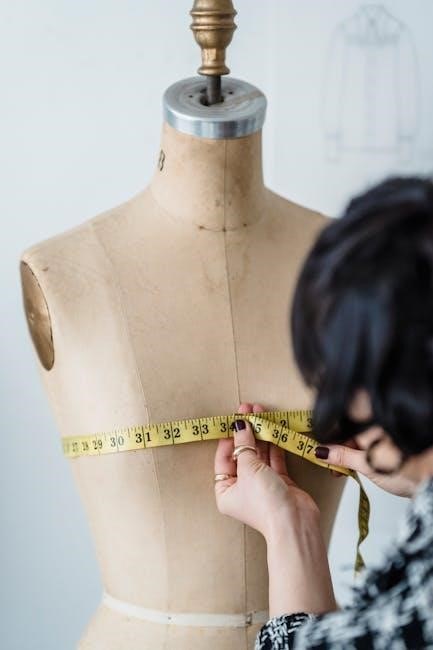
By following the LowA Boot Size Guide, you can ensure a perfect fit, enhancing comfort and performance. Proper sizing is key to enjoying your footwear.
Final Tips for Ensuring the Best Fit
For the best fit, try boots in the afternoon, as feet tend to swell during the day. Use the LowA size chart and consider boot width options. If between sizes, opt for the larger size. Always try boots with the same socks you’ll wear them with. Ensure proper toe room and heel fit. For kids, account for growth room. Visit a stockist for a professional fitting if possible. Remember, LowA offers half sizes, and their boots are true to UK sizing. By following these tips, you’ll enjoy optimal comfort and performance in your LowA boots.
Where to Find Additional Sizing Resources
For further assistance, visit the official LowA website to download their detailed foot measurement guide and access corrected size charts. Authorized retailers also offer professional fittings. Check their EU to UK/US conversion tables for accurate sizing. Additional resources include instructional videos and sizing FAQs. Many stockists provide in-store measuring services. For personalized advice, contact LowA customer support. Their team can help address specific fitting concerns. Ensure you explore these resources to make informed decisions for your ideal boot fit.
